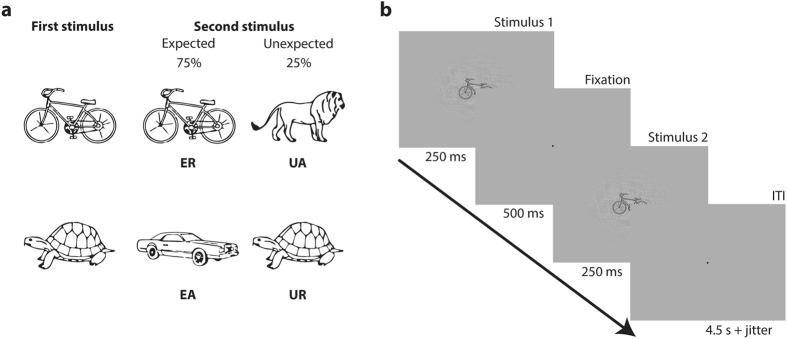Figure 1.
Paradigm and task. (a) Examples of fixed stimulus pairings. Participants learned that some stimuli are most likely to repeat, whereas others are most likely to alternate, thus creating expected repetitions (ER) and expected alternations (EA), as well as unexpected repetitions (UR) and unexpected alternations (UA). (b) Stimulus display, here showing an expected repetition (ER) trial. In the behavioral discrimination task, participants responded to the category of the second stimulus (vehicle or animal) during the inter-trial interval (ITI). During the fMRI oddball task, participants responded to occasional oddball targets (17.4% of trials) in which the stimulus was shown at 60% of its normal size.

